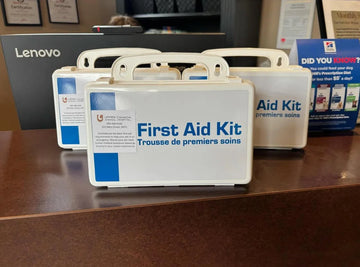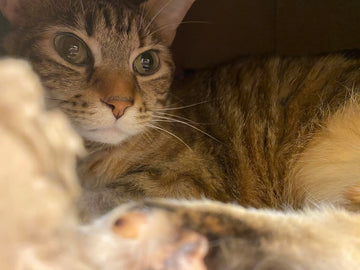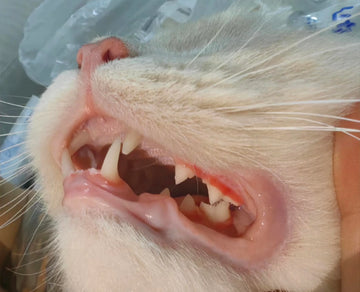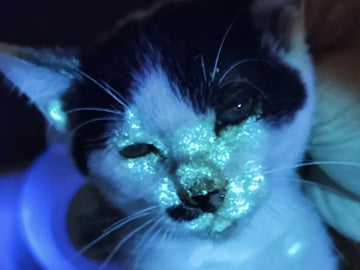The night I finally built our cat’s first-aid kit didn’t start heroic. It started with panic: my cat, Maple, had nicked her paw on a rogue staple under the couch (don’t ask), and it wouldn’t stop oozing. Our regular vet was closed, the ER was slammed, and I had… cotton pads, but no antiseptic, no gauze, no cone, no way to keep her from licking. We were lucky—she healed—but that night convinced me to stop relying on luck. I built a real, vet-informed kit the next morning. This guide is the exact playbook I wish I’d had: what to include, how to use it, when a first-aid kit is enough, and when you must go to the vet. I’ll also link to deeper dives on related problems like Cat Gastroenteritis, Ringworm, Cat’s FIP, and a full Cat Oral Disease Guide so you can act with calm, not guesswork.
Why every home needs a feline first-aid kit
Cats are stealth athletes—and stealth escape artists. The most common at-home emergencies I see (and hear about) as a cat parent: nail tears, minor cuts, soft-tissue sprains from failed parkour, sudden vomiting or diarrhea after a diet adventure, and “mystery” hot spots from over-grooming. A kit doesn’t replace your veterinarian; it buys you time, helps you stabilize, prevents complications (like infection or self-trauma), and turns a frantic scramble into a calm routine.
- Stop minor bleeding quickly and clean safely.
- Protect wounds from licking so they can clot and heal.
- Measure temperature and hydration—signals that guide the vet call.
- Document symptoms and meds so an ER team can act faster.

First-aid principles (what a kit can and cannot do)
- Stabilize, don’t “definitively treat.” Your goal is to control bleeding, protect tissue, prevent contamination, and keep your cat comfortable until veterinary care.
- Cat-safe only. Human meds (e.g., ibuprofen, acetaminophen) are dangerous for cats—do not use unless your vet explicitly prescribes a dose and brand.
- Measure before moving. A thermometer, hydration check, and observed breathing rate tell you if this is a home-care or go-now situation.
- Prevent self-trauma. An Elizabethan collar (cone) and soft recovery wear are worth their weight in gold.
Tip: Program your phone with your regular vet, nearest 24/7 ER, and a poison control helpline. Tape these numbers inside the kit lid.
The complete kit: categories & items
1) Wound care & bandaging
- Sterile gauze pads (2×2 and 4×4), non-stick pads (Telfa)
- Self-adherent wrap (VetWrap or CoFlex)
- Adhesive tape (paper or hypoallergenic)
- Sterile saline (for flushing) and saline pods
- Chlorhexidine 0.05% or dilute povidone-iodine for skin (never eyes/ears unless advised)
- Blunt-tip scissors and small hemostat/tweezers
- Cold pack (instant) and small heat pack (for vet-directed use)
2) Anti-lick & protection
- Elizabethan collar (cone) in correct size
- Inflatable recovery collar (backup)
- Soft cotton infant shirt or cat recovery suit (to cover trunk lesions)
3) Monitoring & diagnostics
- Digital rectal thermometer (cat-dedicated) + lubricant
- Syringes (3–10 mL) for oral fluids/medication
- Gloves (nitrile), flashlight/penlight
- Notebook + fine marker for times, doses, photos
4) Gastrointestinal support
- Electrolyte solution (vet-formulated) or oral rehydration powder
- Probiotic for cats (with guaranteed CFU and feline strains)
- Vet-prescribed anti-nausea or anti-diarrheal meds (if previously directed)
- Bland diet packets (vet diet or plain canned chicken-only, no onion/garlic)
5) Skin & itch care
- Antimicrobial/antifungal wipes (cat-safe)
- Lime-sulfur or miconazole/chlorhex shampoo (if vet-directed; for multi-pet ringworm control)
- Flea comb, single-use tick remover
6) Oral & dental comfort
- Oral syringe for water/food
- Dental gel or rinse (chlorhexidine-based, cat-safe) for vet-advised use
- Soft feeding options for mouth soreness
7) Restraint & transport
- Large towel (for gentle burrito wrap)
- Non-slip mat for carrier
- Backup carrier door clips/zip ties
8) Documentation & labels
- Medication dosing card (weight-based)
- Vaccine history copy
- Emergency contacts & microchip number
If you live in a hot climate or travel in summer, add a battery fan and spare water to prevent heat stress during car rides to the vet.
How to use the core items safely
Stop minor bleeding (paw/nail nicks)
- Apply firm pressure with sterile gauze for 2–5 minutes. Don’t peek early.
- Once bleeding slows, clean around (not into) the wound with diluted chlorhexidine. Avoid hydrogen peroxide—it delays healing.
- Cover with a non-stick pad + light wrap. Do not wrap tight. You should slide a finger under the bandage.
- Put on the cone. Recheck in 15–30 minutes for strike-through bleeding; if persistent, call your vet.
Flush & protect shallow cuts
Use sterile saline to rinse debris. Pat dry, apply non-stick pad if needed, and cone. Recheck daily; if redness spreads, pain increases, or there’s discharge/odor, seek care.
Temperature & hydration check
- Normal cat rectal temp: ~100.0–102.5°F (37.8–39.2°C)
- Pinch shoulder skin; a slow “tent” can mean dehydration.
- Count resting breaths: normal is ~20–30/min when asleep. Faster may be pain, stress, heat, or respiratory disease.
GI upset triage
If vomiting/diarrhea occurs, pause treats, offer small frequent sips of electrolyte solution, and transition to a bland diet for 24–48 hours if appetite returns. Persistent vomiting, blood, black stool, lethargy, or foreign-body risk equals vet time. For a deeper dive, here’s the full Cat Gastroenteritis guide.
Skin & fungus concerns
Localized scaly patches or circular hair loss deserve fast attention to avoid spread. Isolate, use your antimicrobial/antifungal wipes as directed, and read our practical walkthrough on Ringworm (yes, it can infect humans).
Mouth pain days
Drooling, pawing at the mouth, or refusing dry food often means oral pain. Switch to soft food, do not attempt home dental scraping, and call your vet. Our comprehensive Cat Oral Disease Guide explains what’s urgent and what’s routine.
First-aid vs. go-now vet care (decision grid)
| Situation | Home first-aid OK? | Go to vet now? | Notes |
|---|---|---|---|
| Small cut, bleeding stops with pressure | ✔ | Clean, protect, cone. Recheck next day. | |
| Bleeding won’t stop after 10–15 minutes | ✔ | May need hemostasis/sutures. | |
| Vomiting once, eating/drinking otherwise normal | ✔ | Observe 12–24 hours; bland diet. | |
| Repeated vomiting, blood, lethargy, foreign-body risk | ✔ | ER/urgent vet; do not give human meds. | |
| Round hairless scaly lesion (suspect ringworm) | ✔ | Isolate; vet within 1–3 days; disinfect environment. | |
| Heat stress: rapid breathing, drooling, collapse | ✔ | Immediate cooling + ER; avoid ice baths. | |
| Oral pain, drooling, won’t eat | ✔ | Pain control and oral exam are clinical tasks. | |
| Fever > 103.5°F (39.7°C) or persistent | ✔ | Systemic illness possible. See vet. |
Red flags: labored breathing, blue/pale gums, severe trauma, seizures, toxin exposure, urinary blockage signs (straining with no urine). These are emergencies—go now.
If your cat has a chronic condition like FIP and spikes a fever or becomes lethargic, contact your veterinarian promptly. Here’s a humane, detailed Cat’s FIP Story to help frame urgent vs. routine decisions.
Where to store, how to label, and how often to refresh
- Location: cool, dry, visible. I keep ours near the carrier and exit door.
-
Labels: tape a simple quick-start card inside the lid:
1) Cone on. 2) Pressure for bleeding. 3) Clean with diluted chlorhexidine. 4) Photograph & note the time. 5) Call vet if not improving in 30–60 minutes.
- Refresh cadence: review every 3 months; replace expired solutions and single-use items; confirm your ER clinic info hasn’t changed.
- Drills: once a season, practice “cone on” and carrier loading calmly with treats.
Car/travel micro-kit for road trips & holidays
For weekend trips or evacuations, build a glovebox kit:
- Mini cone, gauze pads, saline pods, small VetWrap, antiseptic wipes
- Electrolyte sachets, probiotic sticks, bland diet tins, collapsible bowl
- Spare leash/harness, litter tray liner, small litter bag, poop bags
- Printed vaccine record, microchip number, photo of your cat
- Destination/emergency clinic numbers
If you travel frequently, pair this with our highway-safe pet prep and bookmark your preferred “cat-friendly ER” along your most common routes.
Printable checklist (ready to print)
Tip: hit Ctrl/Cmd + P to print; this table is formatted for paper.
| Category | Item | Purpose | Qty | Notes |
|---|---|---|---|---|
| Wound care | Sterile gauze (2×2, 4×4) | Pressure & cleaning | 20+ | Individually wrapped preferred |
| Wound care | Non-stick pads (Telfa) | Protects wound from sticking | 10 | For shallow cuts/abrasions |
| Wound care | Self-adherent wrap | Secures dressing | 2 rolls | Not too tight; toe tips visible |
| Wound care | Adhesive tape (paper) | Anchors bandage | 1 roll | Hypoallergenic |
| Wound care | Sterile saline or pods | Flush debris | 500 mL | Eye-safe saline if needed |
| Antisepsis | Chlorhexidine 0.05% / dilute iodine | Skin cleaning | 1 bottle | Never full strength on cats |
| Tools | Blunt scissors, tweezers | Cut wrap / remove splinters | 1 each | Rounded tips safer |
| Protection | Elizabethan collar | Prevents licking | 1–2 | Correct neck size matters |
| Protection | Inflatable collar | Back-up comfort | 1 | Not for face/paw wounds |
| Monitoring | Digital thermometer | Fever check | 1 | With lube; label “cat only” |
| Monitoring | Syringes (3–10 mL) | Oral fluids/meds | 4–6 | No needles |
| Hygiene | Nitrile gloves | Clean handling | 10+ | Multiple sizes if family use |
| GI support | Electrolyte solution/powder | Rehydration | 2–4 | Vet-formulated |
| GI support | Feline probiotic | Gut balance | 1 box | CFU & cat strains listed |
| GI support | Bland diet cans | Easy feeding | 4–6 | No onion/garlic |
| Skin | Antimicrobial/antifungal wipes | Hot spots / ringworm care | 1–2 packs | Cat-safe only |
| Skin | Tick remover / flea comb | Vector removal | 1 each | Single-use for ticks |
| Oral | Oral syringe | Medication/fluids | 2 | Pairs with soft diet |
| Restraint | Large towel | Gentle wrap | 1–2 | Helps for nail trims |
| Docs | Vaccine record & microchip | ER reference | 1 set | Printed + phone photos |
| Contacts | Vet/ER/poison control list | Fast calls | 1 card | Tape inside the lid |
FAQ
Can I give my cat human pain meds?
No. Cats metabolize drugs differently—acetaminophen and ibuprofen can be fatal. Use only vet-prescribed medications.
What temperature is a fever for cats?
Above about 102.5°F (39.2°C). If your cat is >103.5°F or lethargic, call your vet.
Do I need a cone for every little scrape?
If your cat licks or chews the site, yes—licking dissolves scabs and introduces bacteria. A cone for 24–48 hours can save a week of setbacks.
How do I keep the kit affordable?
Build it gradually; many items are inexpensive. Replace multi-use items as you go and set a 3-month reminder to review expiries.
Related health guides
- Cat Gastroenteritis — vomiting/diarrhea decisions and home care.
- Ringworm — identify, treat, and disinfect your home.
- Cat’s FIP — a parent’s step-by-step treatment story.
- Cat Oral Disease Guide — stomatitis, gingivitis, periodontitis.




